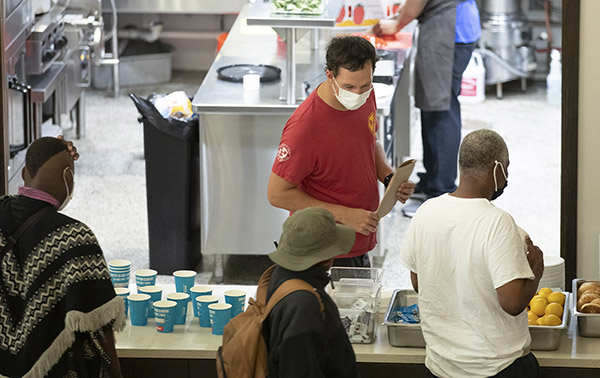Inflation Puts a Strain on Nonprofit Operations
by Jim Vella
Rent or utilities? Food or medicine? Every week, those who struggle financially face difficult decisions about what essentials they can afford, and the spike in inflation is only making things worse.
Right now, the U.S. is experiencing its highest rate of inflation since 1971. The rising costs of food, fuel and housing leave many families with no wiggle room, giving them little choice but to seek help for essential services and supplies.
Our nonprofit partners witness this reality every day. Pope Francis Center, a homeless services provider in Detroit, serves meals to a growing number of guests who can’t cover their rising living expenses. After they pay for rent and utilities, there’s little money left for food. Fish & Loaves, a community food pantry serving metro Detroit, continues to see increased demand for high-priced staples, such as fresh produce, eggs and meat.
If your organization is still reeling from a strain on resources caused by the pandemic, you’re now contending with the added pressure of inflation – a condition that likely impacts every facet of your operations from services and staffing to fundraising.
How Inflation Takes a Toll on Nonprofit Operations
A recent story in The Chronicle of Philanthropy explains why nonprofits are particularly vulnerable to higher inflation.
Services often take a hit at a time when they’re needed most. When supply costs go up – for food, medicine, transportation, building materials and other goods – you’re forced to cut back on services or only serve a fraction of the people who need help.
Staffing shortages become more common. As nonprofit employees resign for higher pay or more flexibility, riding the wave of The Great Resignation, high inflation only makes the problem worse. If your employees struggle with higher living expenses, they’ll likely ask you for a raise. If your budget doesn’t allow it, they may seek jobs that pay more – even if they are passionate about your mission.
Then there’s fundraising, which high inflation impacts in a variety of ways. Your donors may reduce their giving because they have less disposable income. If donors provide recurring gifts, the purchasing power of those gifts diminishes if high inflation persists. The same applies to grants. Grants typically feature a fixed amount paid each year for several years. The grant value decreases over time if inflation gets out of control.
The cost to raise funds increases. It becomes more expensive to host galas or other events, and if you’re forced to raise ticket prices to cover the costs, that may be too expensive for some donors.
What Can Nonprofits Do to Manage Inflation Risks?
While we can’t predict how long these inflationary pressures will last, your organization can take several proactive steps to manage the risks and minimize your exposure.
-
Consult with Your Board
Discuss the challenges you face openly and honestly. More than likely, many of your board members are business executives or business owners. They’ve been down this road before and will likely suggest proven tactics for tackling higher costs. If necessary, they can also advise you about opportunities to connect with donors about easing gift restrictions to help maintain financial stability.
-
Take a Hard Look at Your Finances
Be honest with yourself. You’ll likely face some tough decisions to reduce costs while maintaining the services you provide. That may mean delaying new projects or capital campaigns, increasing the price of special event tickets or cutting printing expenses by sending donors a digital version of your annual report.
-
Communicate Honestly and Frequently
Whatever your financial picture, communicate the situation honestly and often to your board, staff and donors. You’re more likely to maintain support if your key stakeholders understand the steps you’re taking to save money while protecting your mission.
-
Seek Out Collaborations
Do other organizations offer services like yours? If so, there may be an opportunity to partner with them to reduce costs and gain efficiencies.
-
Strengthen Your Investment Portfolio
If your organization funds an investment portfolio, work with your financial advisor to incorporate more protection against inflation. An advisor may recommend treasury inflation-protected securities (TIPs), inflation-indexed bonds, real estate investment trusts (REITs) or commodity futures.
-
Protect Your Grants
If your organization relies on grants to fund projects, be sure to incorporate cost-of-living or inflation adjustments into your proposal budgets. If you’re awarded these grants, those adjustments will help offset the negative effects of high inflation and protect the value of your funding.
By creating and maintaining a disciplined approach to hedging inflation, you’ll protect your organization and your services for the long term. When those you serve struggle with difficult decisions, you’ll be better equipped to see them through.


